Nestled in the stunning landscapes of Ha Giang, Lung Khuy Cave is a hidden gem waiting to be discovered. This 400-million-year-old natural wonder is a testament to the geological marvels of Vietnam. For those who crave adventure and are eager to explore the hidden beauty of Vietnam, the cave offers an unforgettable experience. This article delves into the cave’s rich history, the best ways to visit, and tips to make the most out of your trip, ensuring your journey is both enriching and memorable.
Several pieces of information about Lung Khuy Cave – Ha Giang
The cave is part of the Dong Van Karst Plateau Geopark, a UNESCO Global Geopark. This section will provide comprehensive information about the cave, including its history, location, how to get there, and the best time to visit.
History of the cave
The cave boasts a history that stretches back over 400 million years. The cave was formed by developing limestone mountains over an ancient sea, a process that took millions of years. This natural wonder was hidden from the world for centuries, preserving its pristine condition. The cave’s formation is a fascinating geological story of slow yet relentless natural forces shaping the subterranean landscape. Visitors today can witness the intricate stalactites and stalagmites that have formed over millennia, each telling a story of the earth’s ancient past.
Where is Lung Khuy Cave?
Lung Khuy cave is situated in Quan Ba District, Ha Giang Province, known for its rugged landscapes, dramatic karst formations, and rich cultural traditions. The cave is located in Lung Khuy village, part of the Dong Van Karst Plateau Geopark. Quan Ba District, often referred to as “Heaven’s Gate,” is known for its stunning mountainous scenery, deep valleys, and unique geological features. The picturesque environment, with its terraced rice fields (one of the kind of paddy field in Vietnam), lush forests, and winding rivers, offers a serene retreat for geologists, researchers, and adventurers.
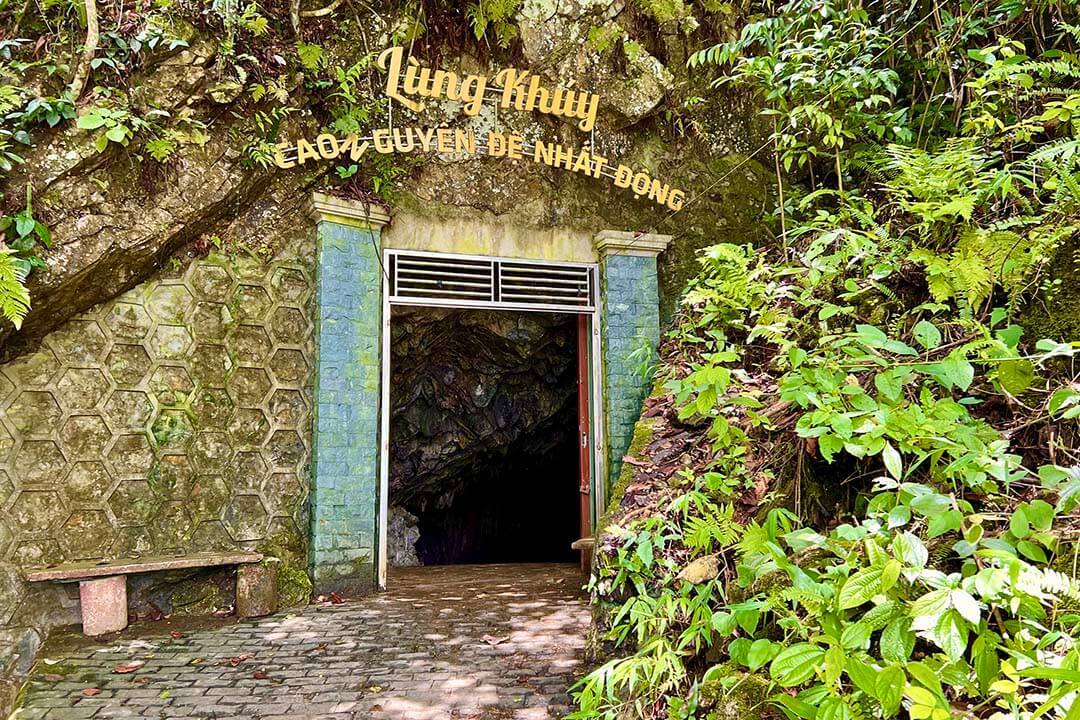
The village of Lung Khuy provides a unique glimpse into the traditional lifestyles of local ethnic groups, predominantly the Hmong people. The village is characterized by traditional wooden houses, colorful textiles, and terraced fields. The Hmong community has preserved their ancient customs and practices, allowing visitors to experience their distinctive culture and daily life. Surrounded by breathtaking natural beauty, it offers an ideal setting for nature lovers, hikers, and photographers. The combination of ancient geological formations and the rich cultural heritage of the local communities makes this region an unforgettable experience.
How to get to Lung Khuy Cave?
Reaching the cave requires a bit of travel, but the journey is part of the adventure. Here’s how you can get there:
By personal vehicle
Driving your vehicle to the cave is a great option if you prefer flexibility. From Ha Giang City, you can take the National Road 4C towards Quan Ba District. The drive is approximately 50 kilometers and offers breathtaking views of the surrounding mountains. Ensure your vehicle is in good condition, as the roads can be challenging, especially during the rainy season.
By public transport
When opting for public transport, take a bus from Ha Giang City to Quan Ba. Upon reaching Quan Ba town, consider hiring a local motorbike taxi (xe om) to reach Lung Khuy village. The local drivers are well-acquainted with the routes and will provide valuable insights about the area.
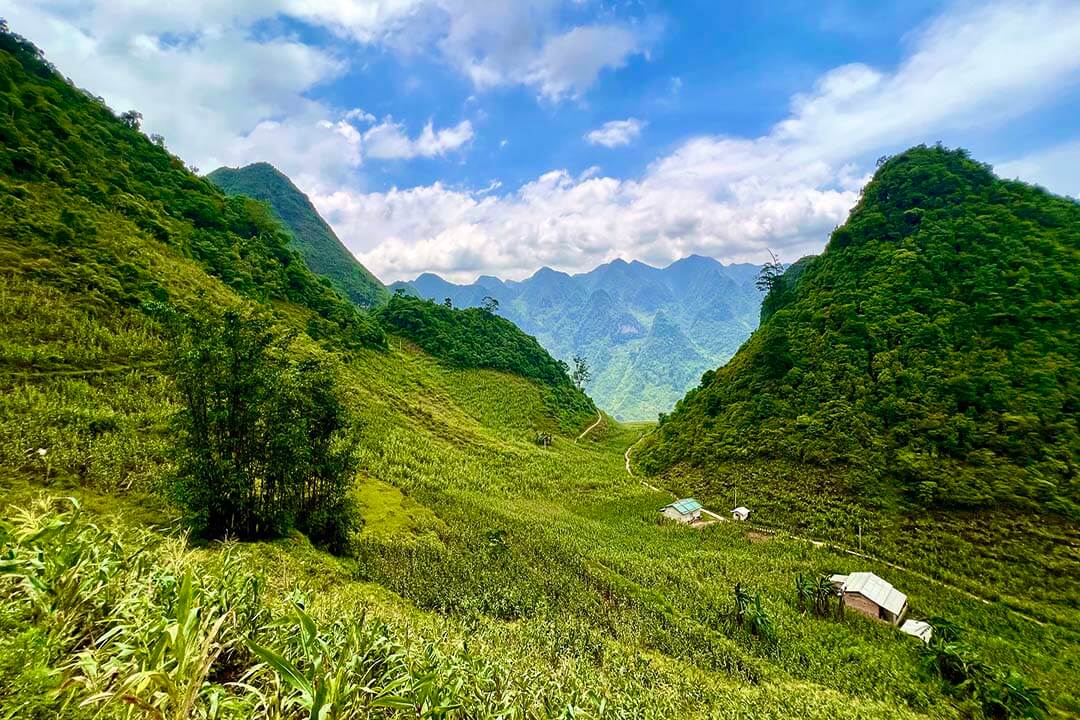
The best time to visit Lung Khuy Cave
The ideal period to explore the cave is during the dry season, which extends from October to April. This timeframe offers pleasant weather and more accessible roads, making the journey safer and more enjoyable. The cooler temperatures are perfect for hiking and delving into the cave without the discomfort of the summer heat.
During these months, rainfall is minimal, ensuring that the paths leading to the cave remain dry and easier to traverse. Clear skies enhance the scenic beauty of the surrounding landscapes, providing excellent conditions for photography. Additionally, visiting in the dry season allows for a more comfortable exploration of the cave’s intricate formations.
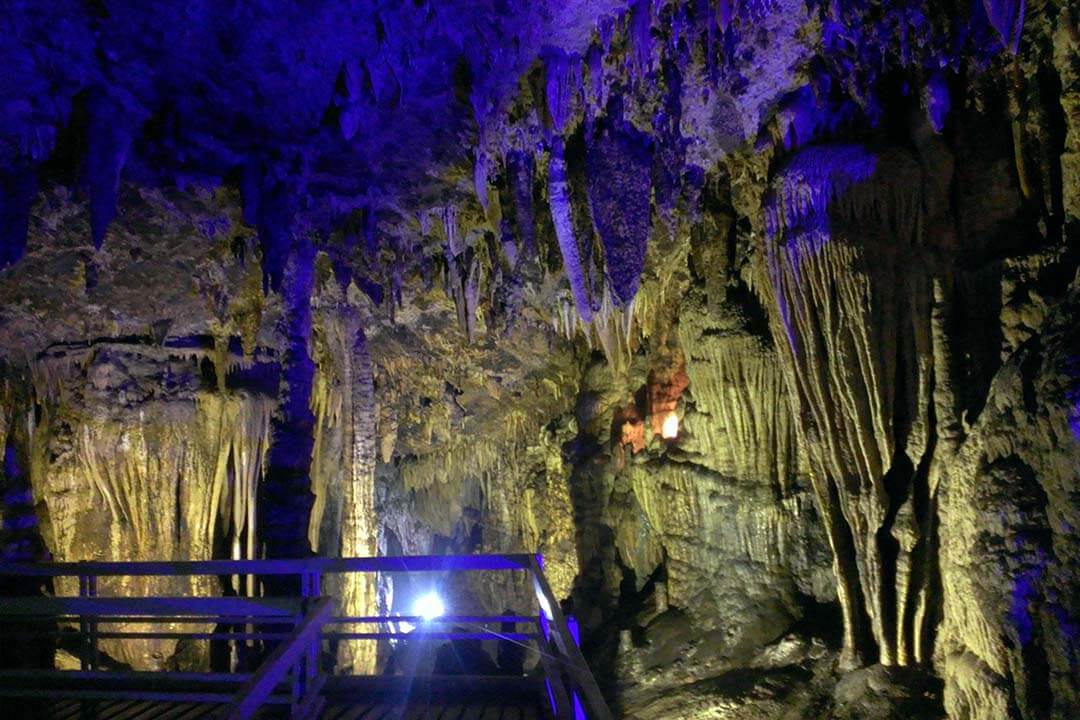
This season also aligns with various cultural festivals in Ha Giang, adding a unique cultural experience to your trip. The Tam Giac Mach Flower Festival in October, for instance, showcases fields of blooming buckwheat flowers, creating a vibrant backdrop for your visit. Combining your cave exploration with local festivals can enrich your travel experience.
Read more about Vietnam climate before traveling to be equipped with enough supplies for your trip
In contrast, the rainy season, from May to September, brings heavy showers that can make the roads slippery and difficult to navigate. The high humidity and heat during this period can also make exploring the cave less comfortable. While the cave remains accessible, the overall experience might not be as enjoyable due to the challenging weather conditions.
Things to do in Lung Khuy Cave
The cave offers more than just a view of stunning geological formations. Visitors can engage in various activities that enhance their experience, from exploring the cave’s intricate chambers to capturing the beauty of the cave through photography.
Admiring the cave
Once inside the cave, you will be greeted by a mesmerizing world of natural formations. The cave features stunning stalactites and stalagmites, some of which are illuminated by strategically placed lighting, highlighting their intricate details. Take your time to wander through the cave and appreciate the beauty that nature has crafted over millions of years. Each chamber offers a unique view, with formations that resemble everything from mythical creatures to delicate curtains of stone.
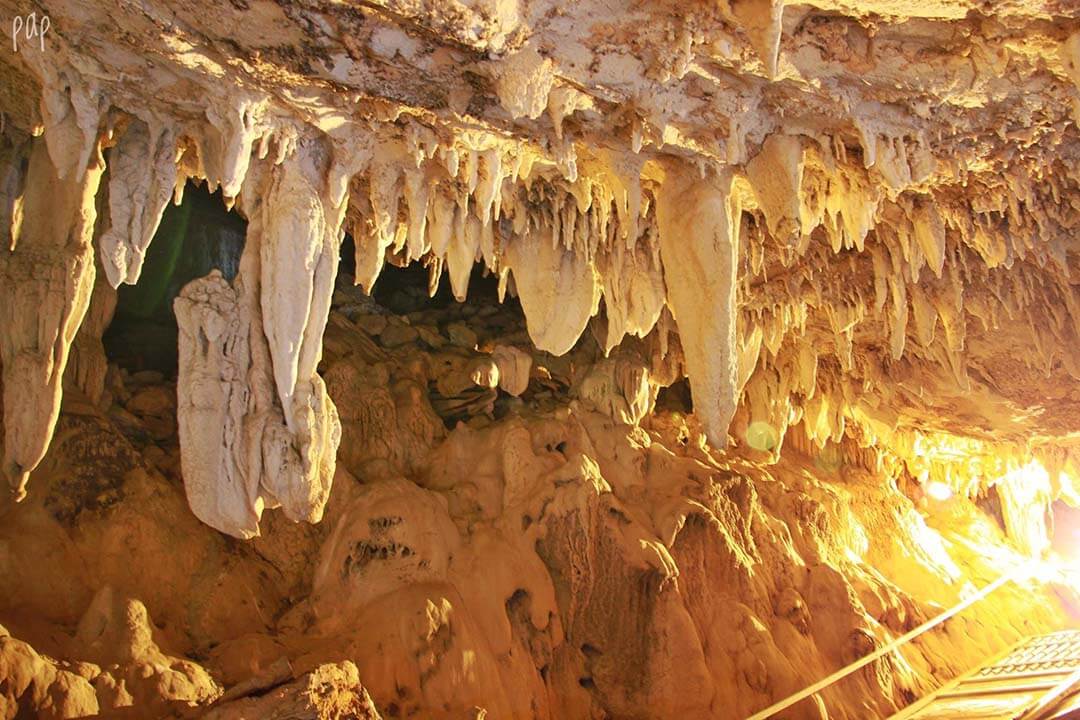
Take lots of photos in this cave
Photography enthusiasts will find the cave a paradise. The cave’s dramatic formations and subtle lighting create perfect conditions for capturing breathtaking photos. Whether you are using a professional camera or a smartphone, there are countless opportunities to take stunning shots. Remember to respect the cave’s environment while taking photos to preserve its natural beauty for future visitors.
Things you might be interested in:
Tips to visit Lung Khuy Cave
To ensure a pleasant and safe visit to the cave, it’s important to follow some practical tips. These tips will help you make the most of your visit while respecting the natural environment and local culture.
Visit in the morning
Arriving at the cave early in the day is highly recommended. The cave typically opens early, and visiting during the morning allows you to experience it with fewer visitors, providing a more tranquil and immersive exploration. The natural light during this time enhances the cave’s features, making it an ideal moment for capturing stunning photographs. The cooler temperatures in the morning also make the hike to and from the cave more comfortable.
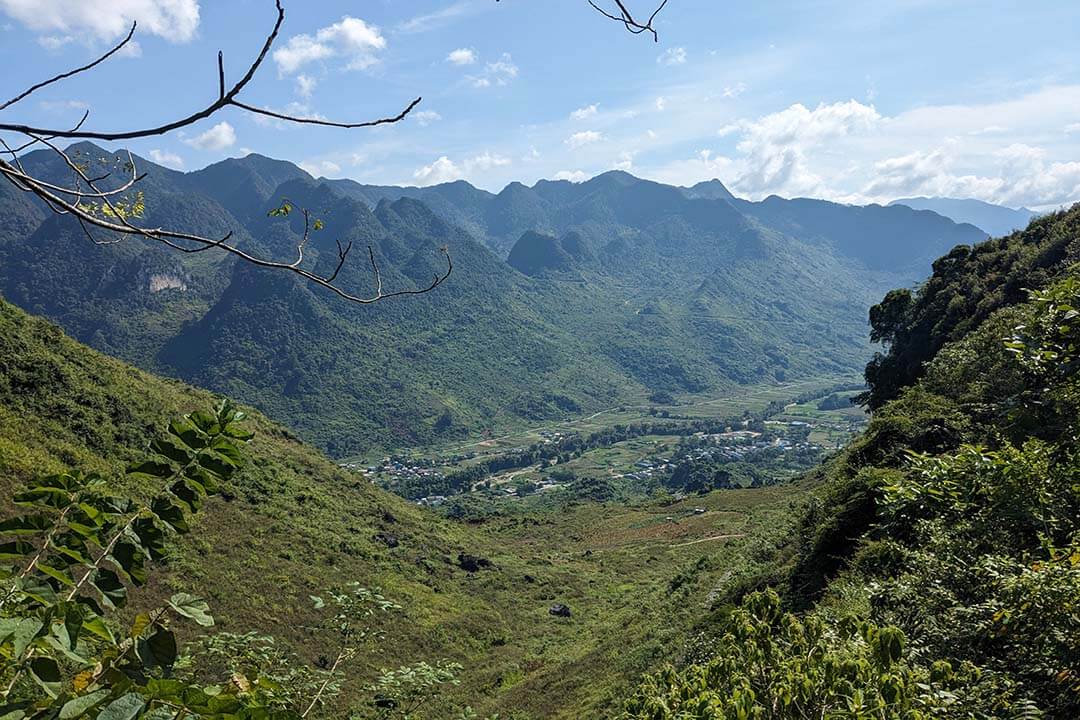
No touching
While exploring the cave, it is important to avoid touching the formations. The delicate stalactites, stalagmites, and other geological structures are easily damaged by the oils and dirt from human hands. Such contact can disrupt their natural development and tarnish their pristine condition. Adhering to the cave management’s guidelines helps preserve the cave’s beauty for future generations. Respect for these natural formations ensures that everyone can enjoy their splendor for years to come.
Carry cash
When planning your visit to the cave, it is wise to bring cash. The village and its surroundings may lack ATMs or electronic payment facilities, so having cash on hand will simplify transactions. This includes paying for entrance fees, transportation, and any local goods or services you might need. Ensuring you have sufficient cash can prevent inconveniences during your trip and help support local businesses.
Attractions near Lung Khuy Cave
The cave is surrounded by a wealth of natural and cultural attractions that are worth exploring. From unique geological formations to picturesque landscapes, these nearby sites offer additional reasons to visit Ha Giang.
Lonely Tree in Lung Khuy village
A visit to the cave would be incomplete without exploring the nearby Lung Khuy village. Among its highlights is the Lonely Tree, a distinctive landmark situated against the dramatic karst mountain backdrop. This solitary tree stands alone in a vast, rugged landscape, providing a peaceful and visually captivating spot for reflection.
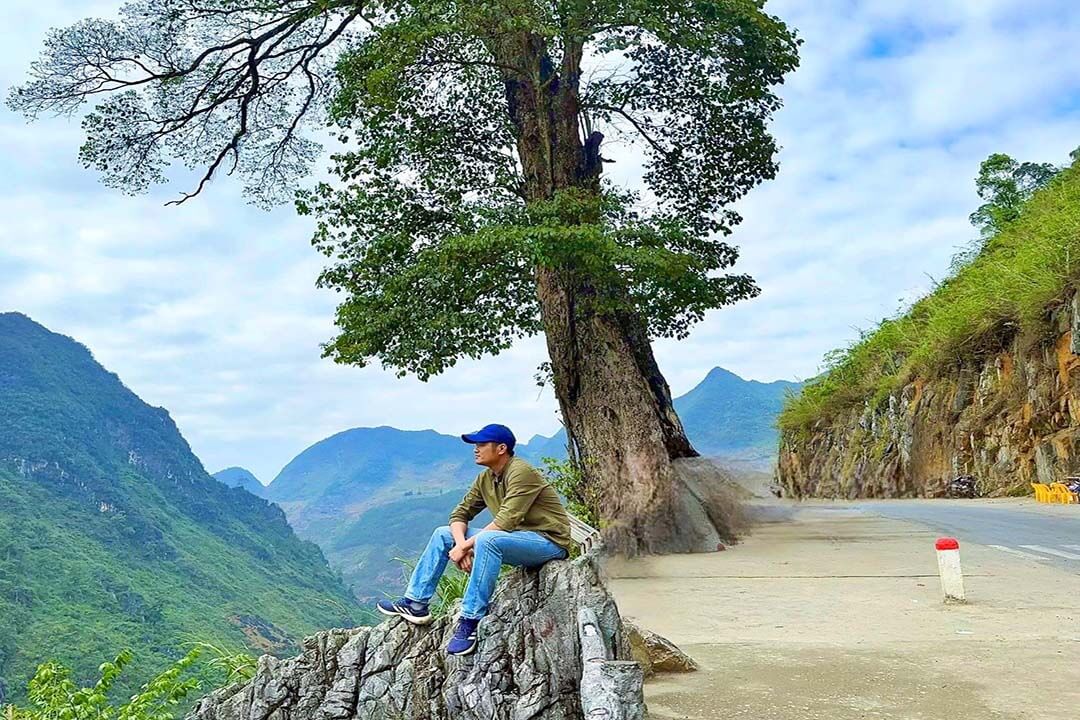
The tree’s isolation amidst the surrounding natural scenery enhances its appeal, making it an ideal location for capturing striking photographs. The juxtaposition of the lone tree with the expansive mountainous terrain creates a visually compelling scene, perfect for those seeking tranquility or aiming to enrich their photo collection.
Quan Ba Twin Mountains
The Quan Ba Twin Mountains, also known as “The Fairy Bosom,” are a notable geological feature in Ha Giang. These twin peaks, resembling a pair of female breasts, are deeply rooted in local legend and lore. Their unique shape not only adds cultural depth but also presents a prime opportunity for photographers.
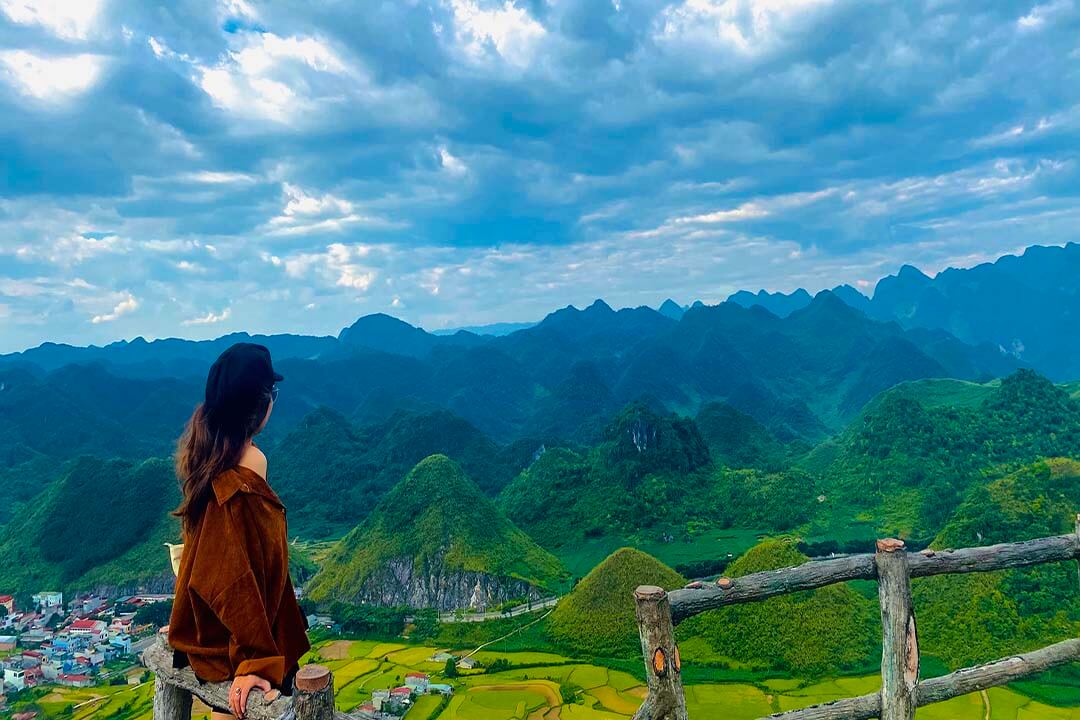
From the top of the Quan Ba Twin Mountains, visitors can enjoy sweeping views of the surrounding valleys and hills. The panoramic vistas, combined with the lush greenery, create a breathtaking visual experience. Situated a short drive from the Lung Khuy the mountains are an easy addition to your itinerary, enhancing your overall exploration of the area.
Tam Giac Mach Flower Garden
The Tam Giac Mach Flower Garden is renowned for its vibrant buckwheat blossoms. The flowers, in shades of pink and purple, create a spectacular and colorful landscape.
The best time to visit the Tam Giac Mach Flower Garden is from September to December, during the blooming season. This period showcases the garden in full color, offering an excellent setting for nature lovers and photographers. The vivid hues of the flowers against the mountainous backdrop make for a memorable and picturesque visit, adding a delightful element to your travel experience.
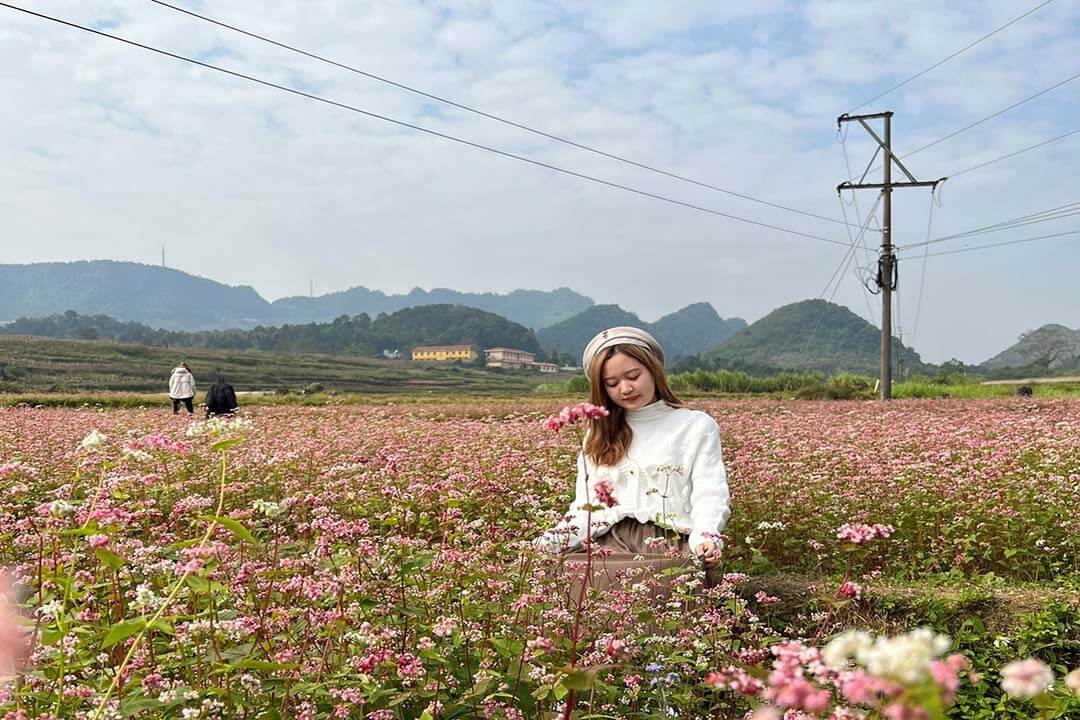
Lung Khuy Cave is a remarkable destination that offers a glimpse into the natural and cultural beauty of Ha Giang. With its rich history, stunning formations, and surrounding attractions, it is a must-visit for anyone traveling to Northern Vietnam. Remember to follow the tips provided to ensure a safe and enjoyable visit, and immerse yourself in the breathtaking beauty of this ancient cave. For more detailed information and travel tips, visit Vietnam Travel Tips, your trusted source for exploring Vietnam’s hidden gems.


